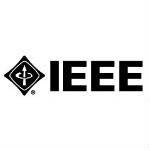 The IEEE has established a study group aimed at enhancing wireless white spaces broadband technology by enabling network operators to create spectrum maps showing where spectrum is heavily and lightly used. Currently white spaces technology uses database technology to keep track of where spectrum has been licensed so that equipment can configure itself to use spectrum that has no licensees in a specific geographic area. But spectrum measurements aren’t part of today’s offerings.
The IEEE has established a study group aimed at enhancing wireless white spaces broadband technology by enabling network operators to create spectrum maps showing where spectrum is heavily and lightly used. Currently white spaces technology uses database technology to keep track of where spectrum has been licensed so that equipment can configure itself to use spectrum that has no licensees in a specific geographic area. But spectrum measurements aren’t part of today’s offerings.
“The main purpose is we want to improve spectral efficiency,” said Apurva Mody, chairman of the IEEE’s 802.22 Wireless Regional Area Network Working Group, in an interview. That working group will provide guidance to the study group.
The new technology would benefit network operators in two different ways, explained Mody. The system would track where spectrum bands are heavily used by unlicensed users so that equipment could self-configure to use a different frequency. Potentially the technology also could be used to determine where licensed spectrum is not in use by the licensee.
“We want to create a survey of what spectrum is being used and how much is used in different locations and different places and [determine] how the information could be provided to some higher entity, which could be a regulator or a database,” Mody said.
Developers initially hoped to build the sensing technology into white spaces networking equipment but as Mody explained, the cost was too high. Accordingly the new study group is looking at creating a stand-alone spectrum occupancy sensing (SOS) system that would use external sensors. Potentially a network operator could deploy the sensors. Alternatively the end user devices could act as sensors and submit data to a central repository using a crowdsourcing approach.
Mody estimated that the standards process would probably take one to two years. He added, however, that, “People already have sensors. You might have implementation sooner.”
The SOS technology that the IEEE is pursuing for TV white spaces spectrum potentially could also be used for spectrum sharing outside the TV white spaces band.
802.22 update
Mody also noted that he expects to see products supporting the 802.22 WRAN standard launched within a few weeks.
Although that standard claims data rates as high as 22 Mbps per vacant TV channel over distances as great as 100 kilometers, Mody said those numbers could only be reached under ideal conditions.
Without line of sight, Mody said range more realistically would be about seven to 10 kilometers. With a base station on a mountain top range might be 40 to 50 kilometers.
The 22 Mbps throughput would be possible at a short distance from the base station, Mody said. “The farther away, the lower the throughput,” said Mody. “At the edge of about 10 kilometers you get 1.5 Mbps down and 384 kbps up.”
Carlson gets FCC certification
Also today, Carlson Wireless announced that its RuralConnect TV white spaces radio has been certified by the FCC for use with the Spectrum Bridge TV white spaces database.
Carlson has been shipping pre-standard white spaces equipment to rural Internet service providers for several months. The range and throughput Carlson customers have experienced is in line with the real-world performance data that Mody outlined for 802.22 devices.

